Abstract
The inter- and intraobserver reproducibilities of the histopathological systems of breast cancer classification suggested by the World Health Organisation (WHO), the Armed Forces Institute of Pathology (AFIP) and Ackerman have been analysed. The reproducibilities of the three classification systems were only "fair" to "moderate" and no correlation with the five-year recurrence rate was found. Our results indicate that these classification systems are without biological significance and are useless for prognosis in the individual patient. When the tumours were classified according to degree of differentiation (high, moderate, low) or graded according to WHO (which includes both differentiation and nuclear atypia), however, there was a significant correlation with the five-year recurrence rate. Yet even such "reduced" subdivisions are of no value in judging prognosis for the individual patient at the time of diagnosis; rather, they are useful only in the follow-up analysis of groups of patients.
Full text
PDF
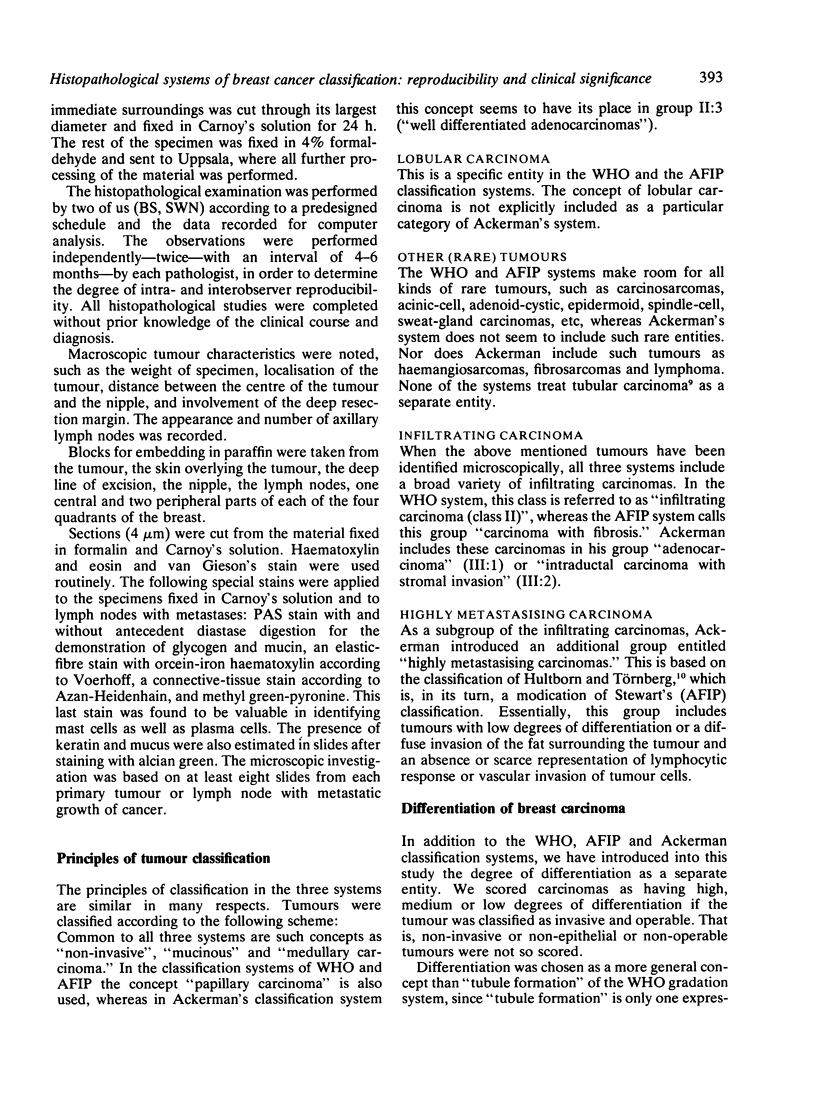
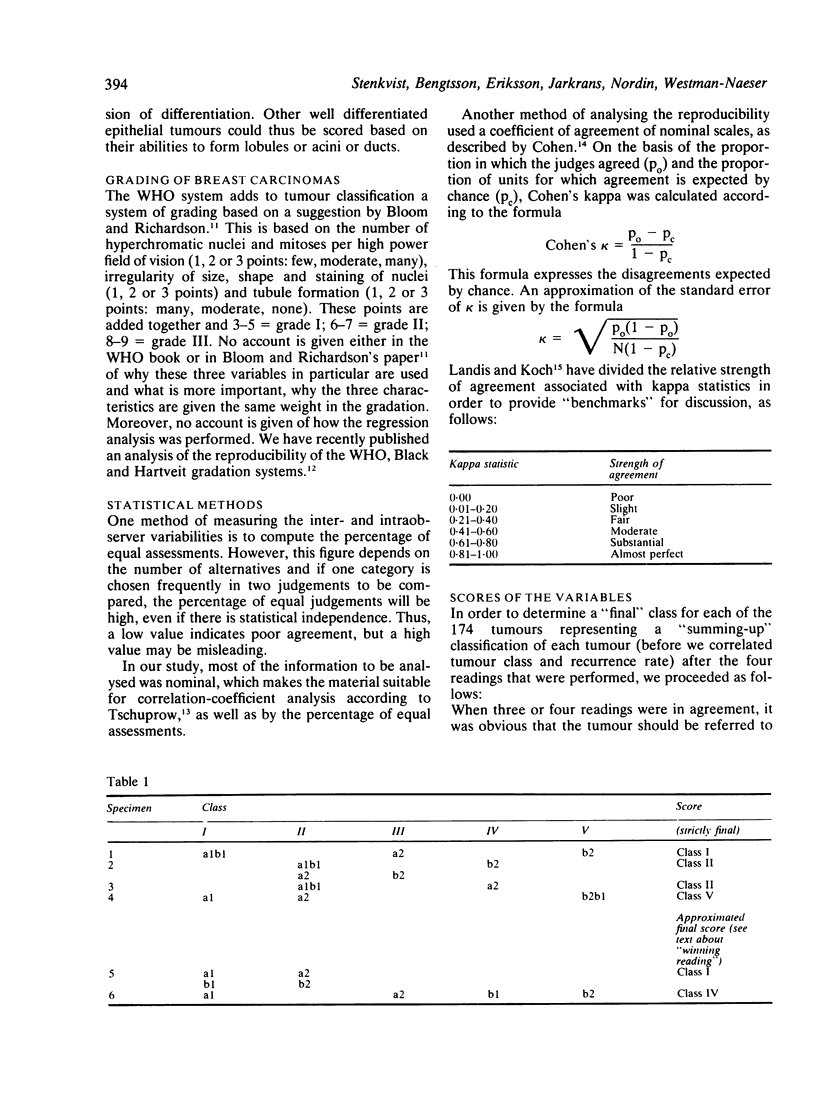
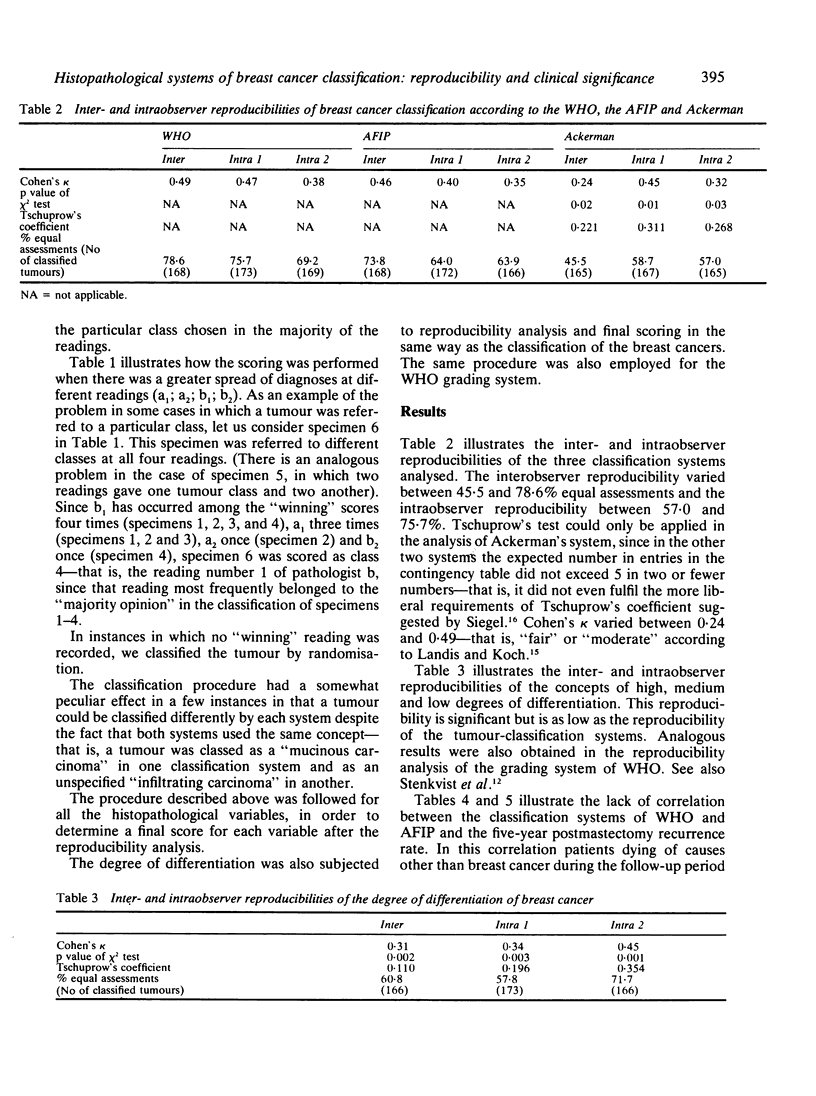
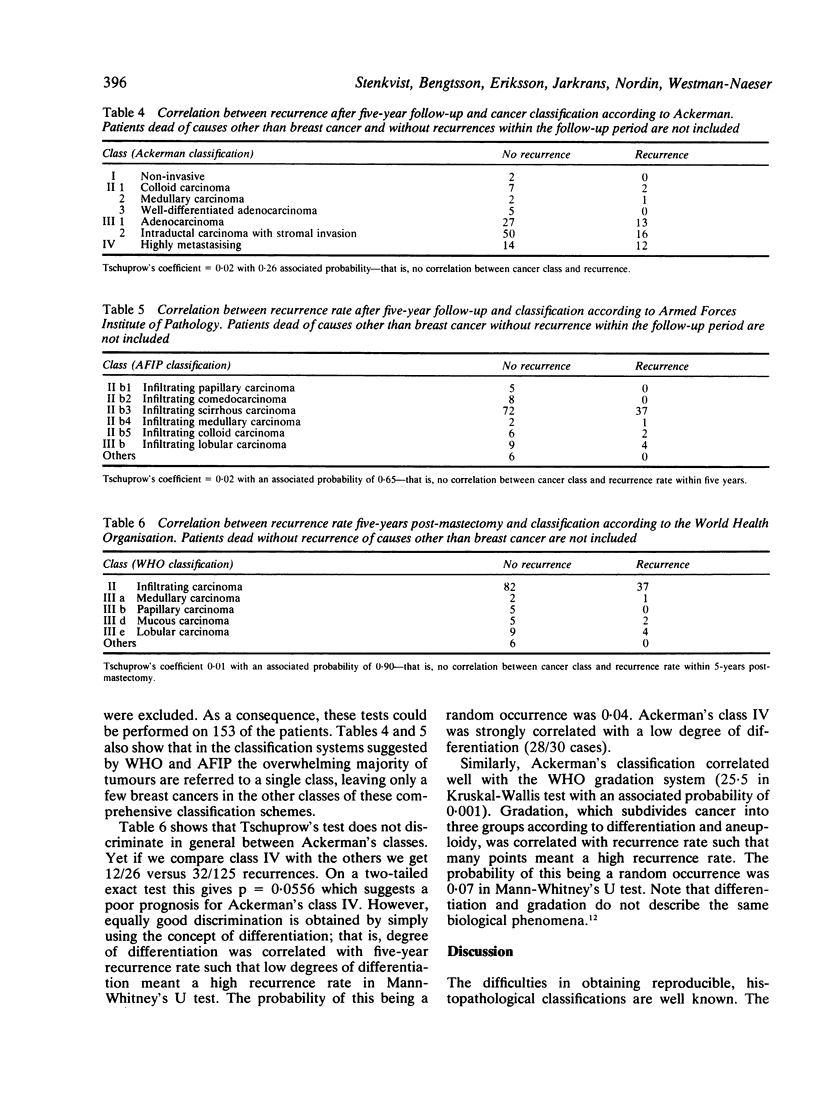
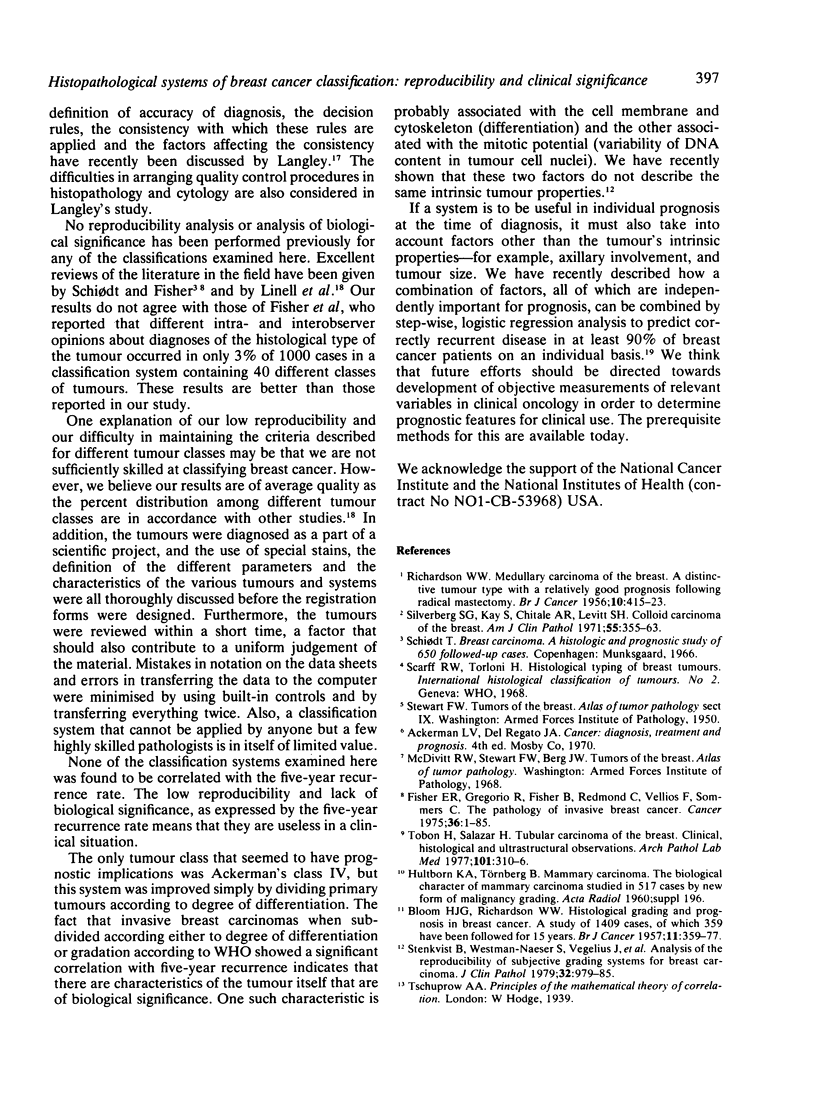

Selected References
These references are in PubMed. This may not be the complete list of references from this article.
- BLOOM H. J., RICHARDSON W. W. Histological grading and prognosis in breast cancer; a study of 1409 cases of which 359 have been followed for 15 years. Br J Cancer. 1957 Sep;11(3):359–377. doi: 10.1038/bjc.1957.43. [DOI] [PMC free article] [PubMed] [Google Scholar]
- Fisher E. R., Gregorio R. M., Fisher B., Redmond C., Vellios F., Sommers S. C. The pathology of invasive breast cancer. A syllabus derived from findings of the National Surgical Adjuvant Breast Project (protocol no. 4). Cancer. 1975 Jul;36(1):1–85. doi: 10.1002/1097-0142(197507)36:1<1::aid-cncr2820360102>3.0.co;2-4. [DOI] [PubMed] [Google Scholar]
- Landis J. R., Koch G. G. The measurement of observer agreement for categorical data. Biometrics. 1977 Mar;33(1):159–174. [PubMed] [Google Scholar]
- Langley F. A. Quality control in histopathology and diagnostic cytology. Histopathology. 1978 Jan;2(1):3–18. doi: 10.1111/j.1365-2559.1978.tb01689.x. [DOI] [PubMed] [Google Scholar]
- RICHARDSON W. W. Medullary carcinoma of the breast; a distinctive tumour type with a relatively good prognosis following radical mastectomy. Br J Cancer. 1956 Sep;10(3):415–423. doi: 10.1038/bjc.1956.48. [DOI] [PMC free article] [PubMed] [Google Scholar]
- Silverberg S. G., Kay S., Chitale A. R., Levitt S. H. Colloid carcinoma of the breast. Am J Clin Pathol. 1971 Mar;55(3):355–363. doi: 10.1093/ajcp/55.3.355. [DOI] [PubMed] [Google Scholar]
- Stenkvist B., Bengtsson E., Dahlqvist B., Eklund G., Eriksson O., Jarkrans T., Nordin B. Predicting breast cancer recurrence. Cancer. 1982 Dec 15;50(12):2884–2893. doi: 10.1002/1097-0142(19821215)50:12<2884::aid-cncr2820501231>3.0.co;2-k. [DOI] [PubMed] [Google Scholar]
- Stenkvist B., Westman-Naeser S., Vegelius J., Holmquist J., Nordin B., Bengtsson E., Eriksson O. Analysis of reproducibility of subjective grading systems for breast carcinoma. J Clin Pathol. 1979 Oct;32(10):979–985. doi: 10.1136/jcp.32.10.979. [DOI] [PMC free article] [PubMed] [Google Scholar]
- Tobon H., Salazar H. Tubular carcinoma of the breast. Clinical, histological, and ultrastructural observations. Arch Pathol Lab Med. 1977 Jun;101(6):310–316. [PubMed] [Google Scholar]


